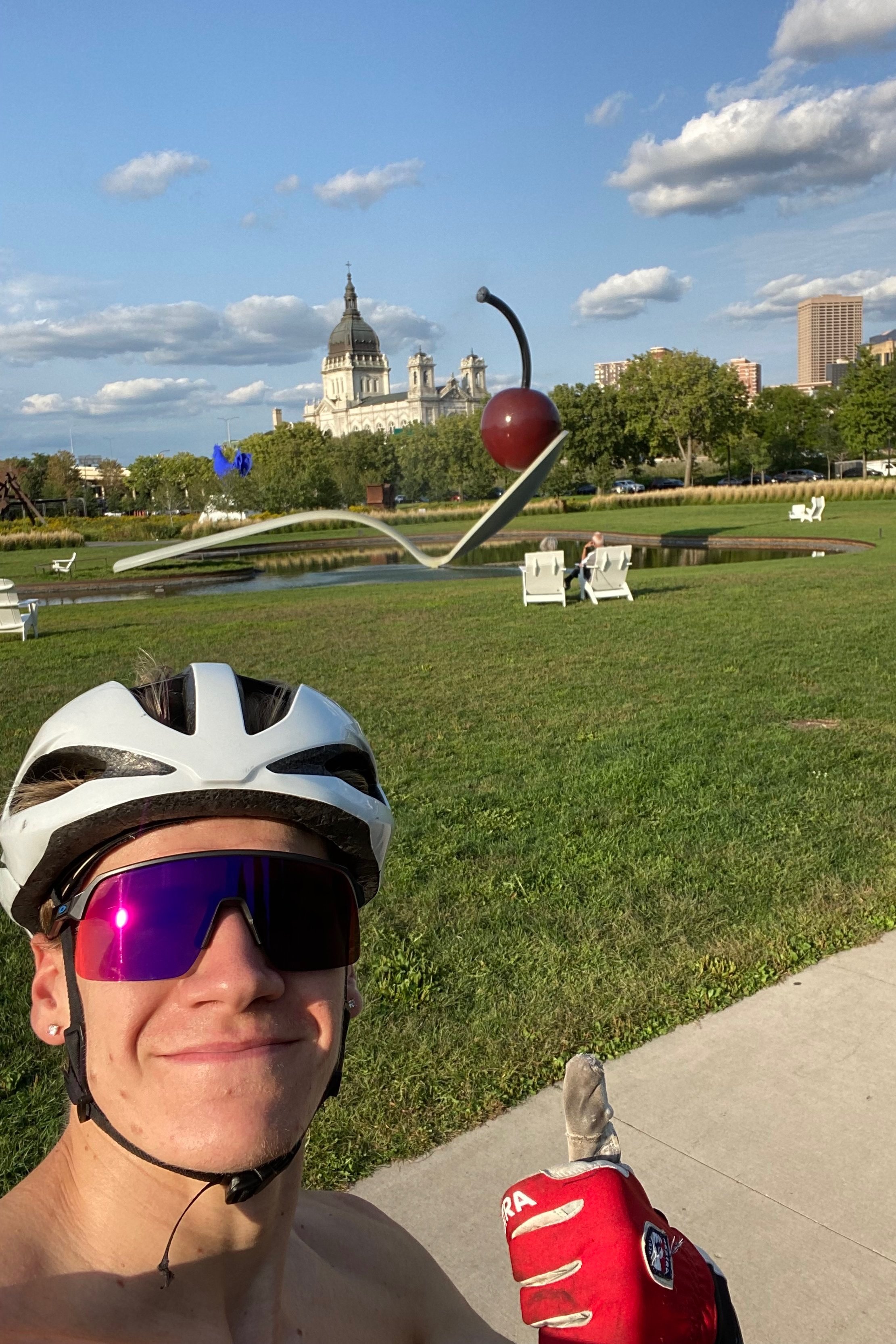3 Training Tips for a Healthy 2022
Trail running along the Minnesota River in August
Hey, everyone! I’m back at it with another “Buzzfeed-esque” blog title. I got positive feedback from my 5 Products That Make My Life Easier blog a few weeks back and I want to take on the same format with advice about training for cross-country ski racing. Training is a topic I really enjoy discussing and I definitely plan to write more in depth on some of these tips in the future. For now, I will try to provide a more general overview of three things that have personally really made a positive difference in my career.
These are in no particular order!
1. Ski technique is super important and is also the quickest way to improve.
In the sport of cross-country skiing (or any endurance sport) fitness is the one thing that people focus on the most. A high level of physical fitness is incredibly important to keep up with the intense demands of a sport like skiing. We tend to think of our workouts as primarily for improving our fitness, as tested by metrics like Vo2 Max and Lactate Threshold. While fitness is incredibly important for ski race performance, elite level fitness can take years or even over a decade to develop.
Beginner and expert skiers alike will find the most gains from improving their technique. Technique changes can be realized in a matter of weeks, and a significant enough positive change can make a massive impact on your race performance. For this reason, I think that technique should always be a big focus — on every single session. Every single easy ski, interval session, or speed session, you should be thinking about your technique. Spend time watching World Cup video to become accustomed to what “correct” technique looks like. Take advantage of your phone and get your coach or friend to take a video of you skiing and compare it to World Cup skiers. Become a student of the sport and you will make huge gains.
Make yourself aware of what good skiing looks like!
2. Go slower on your easy days.
This one has made such a big difference in my training over the last 5 or 6 years. It is something that might seem obvious to some, but I can’t tell you how many times I have seen people make this mistake. Training is all about load management. We do easy training because if we did intervals every day we would become incredibly overtrained. Easy training has also proven to be very effective for technique development and building an aerobic base.
Thing is, both of these benefits are still accomplished effectively when you go really slow. Going slightly too fast does not provide any additional benefit to your training and simply makes you tired for your interval sessions.
For reference, my Max Heart Rate is about 200 BPM and my typical easy day will see an Average Heart Rate between 110-120 BPM. If I am acclimating to altitude or doing a recovery workout, it is not atypical to see an average even lower than that. By no means is HR a perfect guide for training intensity, but I can promise you that if you are averaging much more than 60-65% of your max HR on easy days you could afford to go slower.
Most people who haven’t done this before will find that they have to absolutely walk to keep their heart rate that low. This is because your body is not well trained in the lower zones. What you will find is that when you force yourself to train in that low percentage you will slowly be able to increase your pace at that same heart rate. Eventually, what was once a training pace where you might average 150 BPM is now a 130 BPM effort. Congratulations, you are fitter now.
Easy days should be EASY! Take time to enjoy yourself.
3. Balance life and training stress.
Your body can only handle so much stress. Believe it or not, your body also doesn’t really care whether that stress comes from training, school, work, family, or whatever else. To some extent, stress is stress.
“Good stress” comes in the form of productive training sessions where your body is well prepared for the stimulus. When you really focus on minimizing stress from non-skiing sources and making the most of the “good stress,” you will be shocked at how much training your body can handle.
On the other hand, if you have a huge amount of stress coming from something completely unrelated to skiing, it will still have a huge impact on your skiing. THAT IS OKAY!!!! If you have a non-training source of stress, a few examples being:
Really long travel day
Tons of homework or studying
On your feet all day running errands
Really poor night of sleep
…accept that it is OKAY and SMART to adjust your training accordingly. You will most likely become a much faster skier in the long run by taking the day off or significantly reducing your training in scenarios like these. You have to always make space for the stress in your life. When there isn’t much life stress, then you can add in a lot of training stress — and the opposite is true as well. Try to avoid feeling like you’re “forcing it.”
Only once you truly accept this relationship can you really reach your potential as an athlete. Some people go their entire careers “pushing through the pain” or “grinding” through stress and are almost never better off for having done it. Be kind to yourself!
Sometimes you gotta just relax!!!
That’s all I have for this week! I am finishing up this blog post from Davos, Switzerland. I just got here the morning of 12/19 and will be here for a bit until the Tour de Ski starts on the 28th! Hopefully these training tips can help you a bit.





